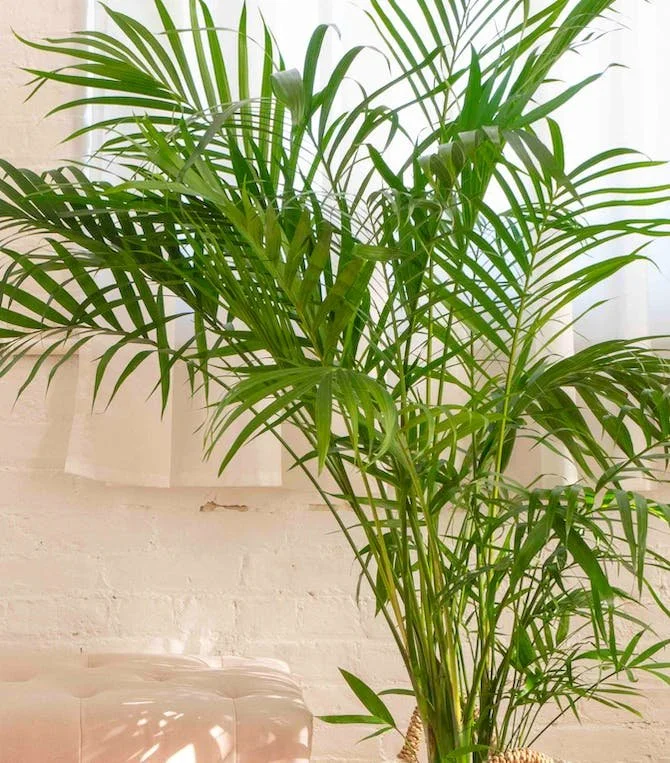Areca Palm
Dypsis lutescens Origin: Madagascar and South India
Areca Palm is a tall clumping palm with narrow, full fronds that resemble bamboo. More sensitive than other species, this grass-like plant requires bright light and is susceptible to pests. Though they can be a relatively short-lived houseplant, they remain a popular choice for their tropical feel and pet-safe foliage.
Common Issues
Dark spots: Overwatering, bouts of cold air or water with high levels of fluoride may be the culprit here. The browning is permanent, so focus on preventing damage to new leaves.
Spider mites: Small red flecks on the leaves and very fine webs are the first sign of spider mites. Don’t panic, but address the infestation immediately for best results—we recommend starting with neem oil.
Light: Areca Palms love bright light, so a southern or western exposure is best. Bonus points if you can give yours a few hours of direct sunlight.
Water: This plant needs to be watered frequently as it acclimates to its new environment. Once it settles in, water thoroughly whenever the top 2 inches of soil are dry to the touch.
Humidity: Though it can survive in regular humidity conditions, this plant prefers humid air and would benefit from a humidifier, the occasional pebble tray, or by being kept near other plants.
Growth: This is a clumping palm and will grow upwards, while also producing offshoots from its base. With proper care, Areca Palms can grow about eight inches a year to a maximum indoor height of around 6 feet tall.
Soil: Areca palms do not like to sit in wet soil, so we recommend a potting mix with bark or perlite to increase drainage. A well balanced, slow release fertilizer is preferable.
Temperature: Average temperatures of around 65-75°F are ideal.
Repotting: Palm roots are thick and fibrous, making repotting a chore. We recommend moving your palm into a pot that is 6 to 8 inches bigger than its current pot to allow for several years of growth.
Extra TLC: Areca palms are sensitive to fluoridated water and water with high mineral levels. They should be watered with distilled water or collected rainwater if possible.

